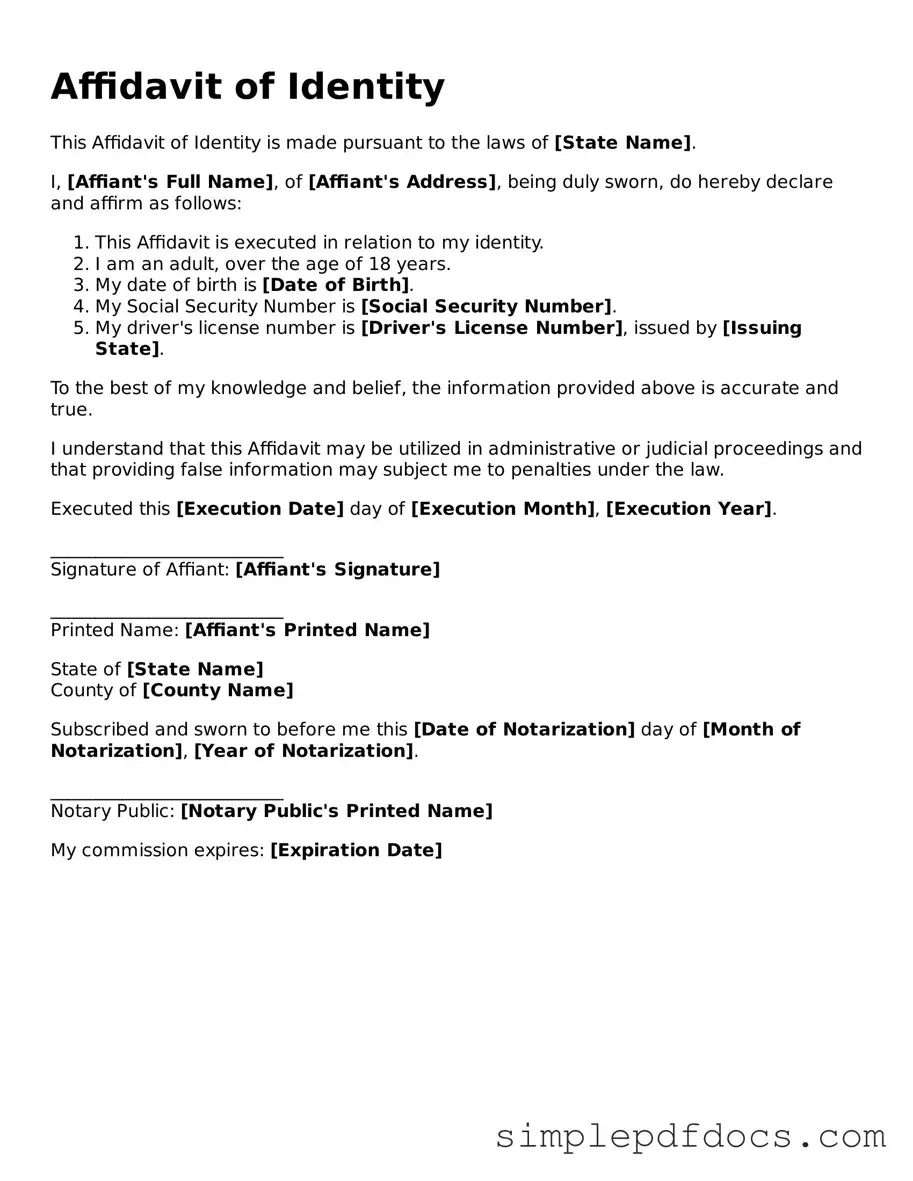Attorney-Approved Affidavit of Identity Form
The Affidavit of Identity form is a legal document used to verify an individual's identity, often required in various legal and administrative processes. This sworn statement helps establish a person's identity when conventional identification methods may not suffice. Understanding its purpose and proper usage can empower individuals to navigate legal situations more effectively.
Get Document Here
